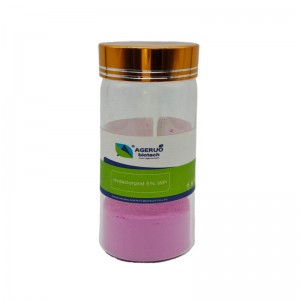Yes, imidacloprid can kill mites, but its effectiveness varies depending on the mite species and the method of application. Imidacloprid is primarily known for its action against insects, including fleas, ants, and termites, but it also has some activity against certain types of mites, particularly those that infest plants, such as spider mites.
How Does Imidacloprid Work on Mites?
Imidacloprid works by affecting the nervous system of pests. It is a systemic insecticide, meaning it is absorbed by plants and animals and moves throughout their system. When mites feed on the plants treated with imidacloprid, the insecticide disrupts the transmission of nerve impulses, ultimately causing paralysis and death in the mites. The mode of action is similar to how imidacloprid affects other pests like fleas and ants, by targeting their nervous system and interfering with acetylcholine receptors.
Effectiveness of Imidacloprid on Mites
While imidacloprid can control certain mite species, it is typically more effective against plant-feeding mites like spider mites and citrus mites. These pests can cause damage to a wide range of crops, including vegetables, fruits, and ornamental plants. When applied to plants, imidacloprid is absorbed through the roots and leaves, providing effective protection against mites by poisoning them when they ingest plant tissues that contain the chemical.
However, imidacloprid is generally not as effective against all types of mites, particularly red mites that infest animals, such as poultry or pets. For these types of mites, other specific miticides may be more effective.
Application Methods for Mite Control
Imidacloprid is typically available in several formulations, such as:
- Soil treatments: For controlling plant-feeding mites, imidacloprid can be applied as a soil drench. The plant absorbs the insecticide, and the mites are affected when they feed on the treated plant parts.
- Foliar sprays: Imidacloprid-based sprays can be applied directly to the leaves or stems of plants infested with mites. This method is most effective when mites are feeding on the plant’s upper parts.
- Topical treatments: For pets or animals with mite infestations (such as mange or scabies mites), imidacloprid is available in topical treatments that are absorbed through the skin. These products are commonly used to treat flea and tick infestations as well.
Advantages of Using Imidacloprid for Mite Control
- Long-Lasting Protection: Imidacloprid offers extended control against mites, reducing the need for frequent applications.
- Systemic Action: Its systemic nature means that imidacloprid can target mites that are feeding on all parts of the plant, including those that are difficult to reach with topical sprays.
- Low Toxicity to Humans and Animals: When used as directed, imidacloprid is relatively safe for humans and animals, with minimal toxicity compared to some other pesticides.
Safety Considerations and Environmental Impact
While imidacloprid is effective, there are some important safety considerations:
- For Plants: Follow recommended dosages to avoid harming beneficial insects like bees and other pollinators.
- For Animals: When using imidacloprid to control mites on pets or livestock, ensure proper application and avoid overdosing, which can lead to side effects like drooling or gastrointestinal upset.
- For the Environment: Imidacloprid is toxic to aquatic organisms and beneficial insects, so care should be taken to avoid runoff into water bodies or exposure to pollinators like bees.
Conclusion: Does Imidacloprid Kill Mites?
Yes, imidacloprid can kill certain types of mites, especially those that infest plants, such as spider mites. Its systemic properties allow it to provide effective control by being absorbed into the plant and killing mites when they feed on it. However, imidacloprid may not be as effective against all mite species, particularly those that affect animals or specific mite infestations.
For the most effective mite control, it’s important to choose the right miticide and application method based on the specific type of mite you’re dealing with.
Frequently Asked Questions about Imidacloprid and Mites
- How long does it take for imidacloprid to kill mites? Imidacloprid usually works within a few days to a week, depending on the severity of the infestation and the mite species.
- Is imidacloprid safe for pets? Yes, imidacloprid is commonly used in flea and tick treatments for pets. However, it’s important to follow the product’s instructions to avoid adverse reactions.
- Can imidacloprid be used to control mites on all plants? Imidacloprid is effective on many types of plants, but it’s important to follow the manufacturer’s guidelines to ensure compatibility with the specific crops or plants you’re treating.
- What types of mites does imidacloprid control? Imidacloprid is most effective against plant-feeding mites, including spider mites and citrus mites.
- Can imidacloprid be used with other pesticides for mite control? Yes, imidacloprid can often be used in combination with other pesticides for broader spectrum pest control. Always check product labels for compatibility and safety guidelines.
Read more:
Pets and Imidacloprid: How Safe Is It for Your Dog or Cat?
What Insects Does Imidacloprid Kill and Uses?
Chlorantraniliprole vs Imidacloprid Insecticides
Clothianidin, imidacloprid, and thiamethoxam
Imidacloprid vs Acetamiprid
Imidacloprid vs Bifenthrin
Emamectin Benzoate vs. Imidacloprid
Chlorantraniliprole vs Imidacloprid Insecticides
Post time: Jan-14-2025








